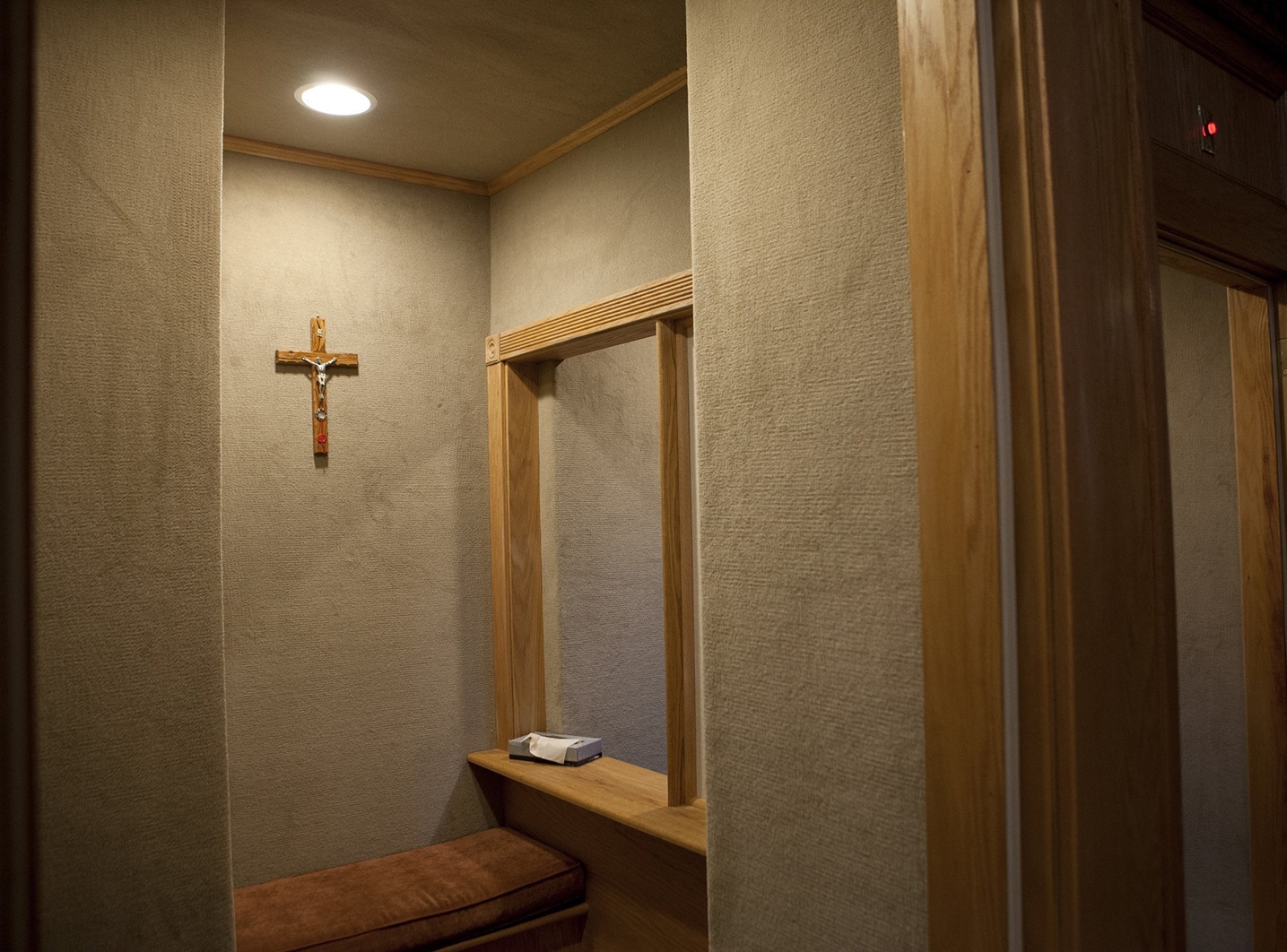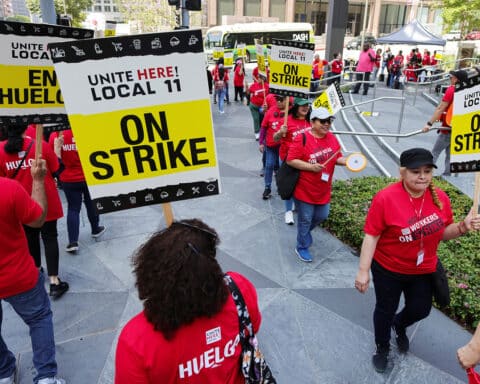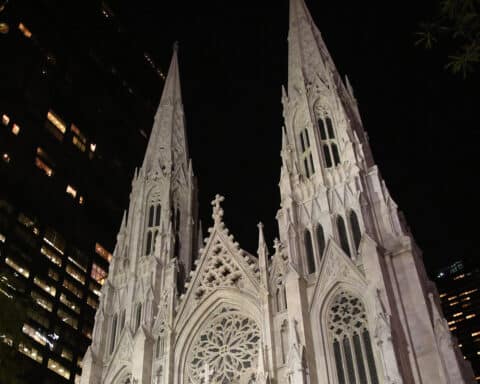(OSV News) — An assault on a Texas priest — along with recent incidents at Catholic churches in the U.S. and Canada — highlights the need for parishes to implement more robust security measures, experts told OSV News.
On April 10, Father Tony Neusch, rector of St. Mary’s Catholic Cathedral in Amarillo, Texas, was pepper-sprayed while hearing confessions.
In a Facebook post that same day, Father Neusch wrote that “someone dealing with mental health issues” had attacked him. He said he did “not require medical attention,” adding that police had been notified. No arrests have yet been made in the case.
Father Neusch, who declined to comment to OSV News, said in his post that the parish would “suspend Confessions, except by appointment, until security cameras can be installed in the Chapel.
“I am sorry for any inconvenience this may cause, but the safety of our confessors and those waiting to receive the Sacrament needs to be preserved,” he wrote.
Recent incidents in the U.S. and Canada
In recent weeks, Catholic churches and shrines throughout the U.S. and Canada have seen a number of security incidents:
— The Easter Vigil Mass at St. Patrick’s Cathedral in New York was disrupted by some 10 protestors, who took up positions in at least two areas of the cathedral to decry Israel’s retaliatory attacks on Hamas in Gaza. Three protestors were arrested and charged under New York State law with disrupting a religious service.
— Parishioners of St. Nicholas Ukrainian Catholic Church in Toronto had to evacuate the building toward the end of their 10 a.m. liturgy on March 24, due to a bomb threat apparently made by a woman experiencing mental distress.
— Servite Father Leo Hambur narrowly escaped harm after an assailant vandalized The Grotto, the National Sanctuary of Our Sorrowful Mother in Portland, Oregon, on Feb. 28 and broke into a clergy residence on the shrine’s grounds. The suspect was arrested and charged with multiple offenses, including three felonies.
Recognizing vulnerability
Violence in houses of worship is far from unprecedented — Jesus spoke of Zechariah son of Barachiah being “murdered between the sanctuary and the altar” (Mt 23:35), and St. Thomas Becket and St. Wenceslaus were both killed on church property during the Middle Ages.
In recent years, the United States has witnessed gunmen carry out mass killings at the Pittsburgh Tree of Life Synagogue and the Emanuel African Methodist Episcopal Church in Charleston, South Carolina.
In security industry parlance, churches and other religious structures are known as “soft targets” — public, civilian spaces that are easily accessible and typically have limited security measures. A growing recognition of that vulnerability has led to initiatives such as the Department of Homeland Security’s house of worship protection program and the annual Church Security Essentials Conference, which takes place April 25-26 in Austin, Texas.
Balancing security and pastoral welcome
Preserving both pastoral welcome and commonsense security in places of prayer can be a delicate balance, said Craig Gundry of Critical Intervention Services, a Tampa, Florida-based security consulting firm with extensive experience in church security.
“Churches tend to be very open communities, and that’s desirable. That’s what we want to create,” Gundry told OSV News. “And that obviously presents some challenges from a security perspective.”
Gundry said that his firm has particularly focused on the details of “improving physical security for churches while maintaining an environment that is conducive to community and to spiritual celebration.”
In addition to developing emergency response policies and procedures, assembling a “church security team (is) very valuable,” Gundry said.
“They in essence serve as the guardians of the flock … observing and monitoring for potential threats,” he said.
In fact, such teams were established in 16th-century Ireland under the Penal Laws to protect Catholic priests as they clandestinely celebrated Mass. The practice was continued in the United States by the Ancient Order of Hibernians and other Irish fraternal organizations as Irish Catholics suffered violence from Nativist factions.
Parish-wide efforts
The Catholic Community of St. Thomas More in Chapel Hill, North Carolina, launched its St. Michael the Defender Ministry in 2017, led by Jeff Malkovsky, a professional in the field of global complex risk and threat management.
Weekend Masses are staffed by an armed off-duty Chapel Hill police officer, and the team annually hosts a “Safety Sunday” that features evacuation drills. In addition, St. Michael ministry members partner with the parish’s mental health volunteers to spot and head off potential crises during worship.
Malkovsky — whose team was put to a real-life test when an August 2023 active shooting unfolded at the nearby University of North Carolina campus — told OSV News that security is a parish-wide project.
“The more people who are aware at all levels in any organization, any operation, the more you can begin to build safety nets around it … (through) avoidance, mitigation and response,” said Malkovsky.
He added that the Diocese of Raleigh, North Carolina, has approved use of the St. Michael the Defender Ministry model across some 80 parishes and 30 schools.
Bishop’s response
In the Diocese of Memphis, Tennessee, Bishop David P. Talley has instituted a security and safety advisory committee for that diocese’s parishes and schools.
Malkovsky explained that ensuring parish security starts with having both “awareness” and an “understanding” of a particular environment’s “risks and threats.”
“Because they’re all unique,” he said. “An urban environment is going to be different than a rural environment. A big parish is going to be different than a little parish.”
Regardless of parish size, however, keeping priests and penitents safe during the Sacrament of Reconciliation, which is bound by anonymity and the seal of confession, requires extra consideration, admitted St. Thomas More pastor Father Scott McCue.
“A confessional is very much an enclosed thing. There’s one way in and one way out,” Father McCue told OSV News ahead of an April 16 meeting with the St. Michael ministry team.
He noted that some modern church construction features confessionals that are not mere booths or alcoves, but are structurally adjoining, full-sized rooms and have “a screen or (some) way the priest and penitent can be seen face to face.”
“But then again, is the room that the priest is in locked, so that (an attacker) can’t just walk in there?” Father McCue asked.
The attack on Father Neusch, he said, is “a good conversation starter” for additional discussions on parish security.





